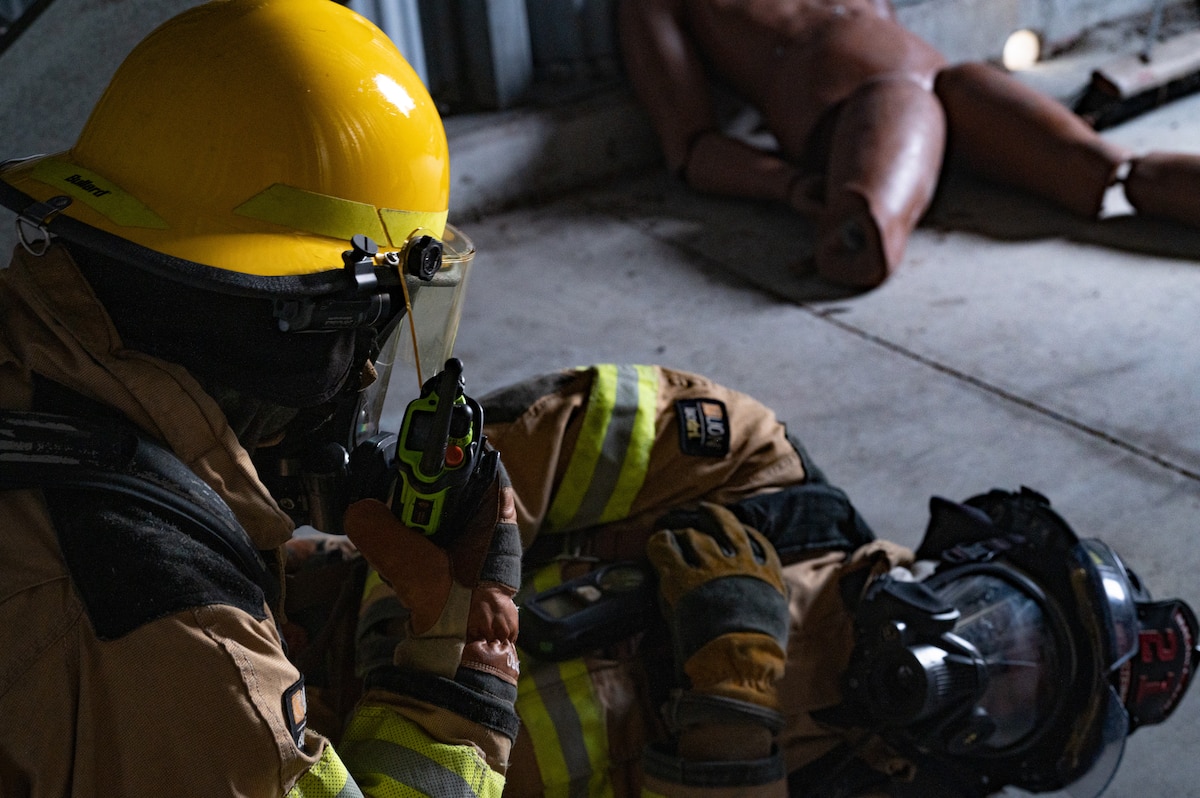By Senior Airman Michael Killian
6th Air Refueling Wing
MACDILL AIR FORCE BASE, Fla. The 6th Civil Engineer Squadron's fire department conducts rapid intervention training (RIT) as part of its mission to ensure the highest level of readiness and efficiency when responding to emergencies. This specialized training is a critical component in maintaining the safety and effectiveness of the 6th Air Refueling Wing.
Rapid intervention training focuses on rescuing injured or trapped firefighters during fire emergencies. Air Force Staff Sgt. Hunter Larson, a lead firefighter assigned to the 6th CES, explained the importance of RIT. "It's about being prepared for the worst-case scenarios.” Larsen said. “Our teams practice rigorous scenarios to ensure that if a firefighter is down, we have a quick and effective response mechanism."
In a job where every second counts, RIT emphasizes proficiency in high-pressure situations, and understanding complex situations like structural fires, where visibility is low, and the risk of injury is high.
"Our training prepares us for these intense environments,” Larson said. “We regularly undergo drills that mimic real-life scenarios, ensuring our reactions become second nature."
As a lead firefighter, Larson plays a pivotal role in coordinating the team's response during emergencies. His leadership ensures that his team is well-prepared and equipped to handle residential fires to larger structural emergencies.
"I'm responsible for scene assessment and directing our crew,” Larson said. “RIT reinforces our teamwork and decision-making skills which is crucial in high-stress environments."
The use of advanced equipment, such as the Personal Accountability System (PAS) is an integral part of RIT. This device alerts rescuers to a firefighter’s location if they stop moving for more than 60 seconds.
Nicholas Dunlap, a lead firefighter assigned to the 6th CES explained, "The PAS device is a game-changer. It significantly increases our chances of quickly locating and rescuing a downed firefighter."
The fire department at MacDill is committed to staying up to date on the latest firefighting technology. "Firefighting is an evolving field.” Dunlap remarked. “We continuously update our training to deal with modern materials and fire behavior."
According to Larson, the rigorous training schedule at the fire department prepares firefighters to respond to emergencies immediately noting, "firefighting is physically demanding and pretty stressful. Our daily training and focus on fitness help mitigate risks like cardiac arrest, which is common in high-stress environments."
Thanks to the rigorous training and emphasis on safety, the MacDill fire department boasts an impressive safety record. Dunlap proudly noted, "In my 17 years here, we've not had a firefighter go down during an operation, a testament to our training and preparedness."
The effectiveness of RIT has broader implications for the base's overall mission. "Our readiness directly impacts the safety and operational capacity of the 6th Air Refueling Wing.” Dunlap said. “By ensuring our team is prepared for any eventuality, we contribute to the base's overall mission success."
The rapid intervention training at MacDill Air Force Base exemplifies the 6th CES's fire departments commitment to excellence. Through rigorous training, advanced equipment, and an emphasis on teamwork and leadership, the firefighters at MacDill are well-equipped to handle emergencies, contributing significantly to the accomplishment of the base's mission and priorities.
